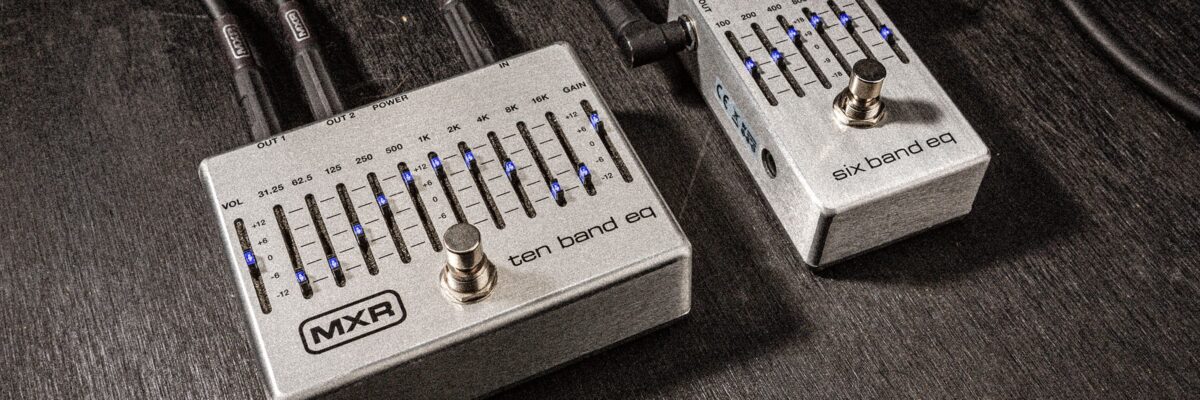What is an EQ pedal? A tone shaper, surely. But they can be much more than that.
MXR® offers two great options: the Six Band EQ and the Ten Band EQ. Modern classics, both feature noise-reduction circuitry, true bypass switching, brighter LEDs for increased visibility, and a lightweight aluminum housing. The Six Band covers all the essential guitar frequencies, from 100Hz to 3.kHz, while the Ten Band EQ gives you control over a wider range, from 31.25Hz to 16kHz—perfect for bass players and extended range guitar players.
With these pedals in mind, we talked to the gigging and recording musicians on our team and collected a list of compelling reasons that show why you should have an EQ pedal at all times.
MATCH UP WHEN YOU MAKE THE SWITCH
If you use multiple instruments during a show, or even during a recording session, having an MXR Six Band EQ or MXR Ten Band EQ can save you a lot of time you’d otherwise spend reconfiguring your settings every time you make the swap.
Let’s say you’re switching from an active bass to a passive bass. Or from a guitar with single-pickups to a guitar with humbuckers. Or even from an electric guitar to an acoustic one. That’s going to change up the overall sound of your signal chain.
But with an EQ pedal, you can adjust the frequencies—and input and output with the MXR Ten Band EQ—as needed to keep a consistent sound. Just set the sliders where you need them to make the second instrument match, and then kick the pedal on when it’s time to make the switch.





